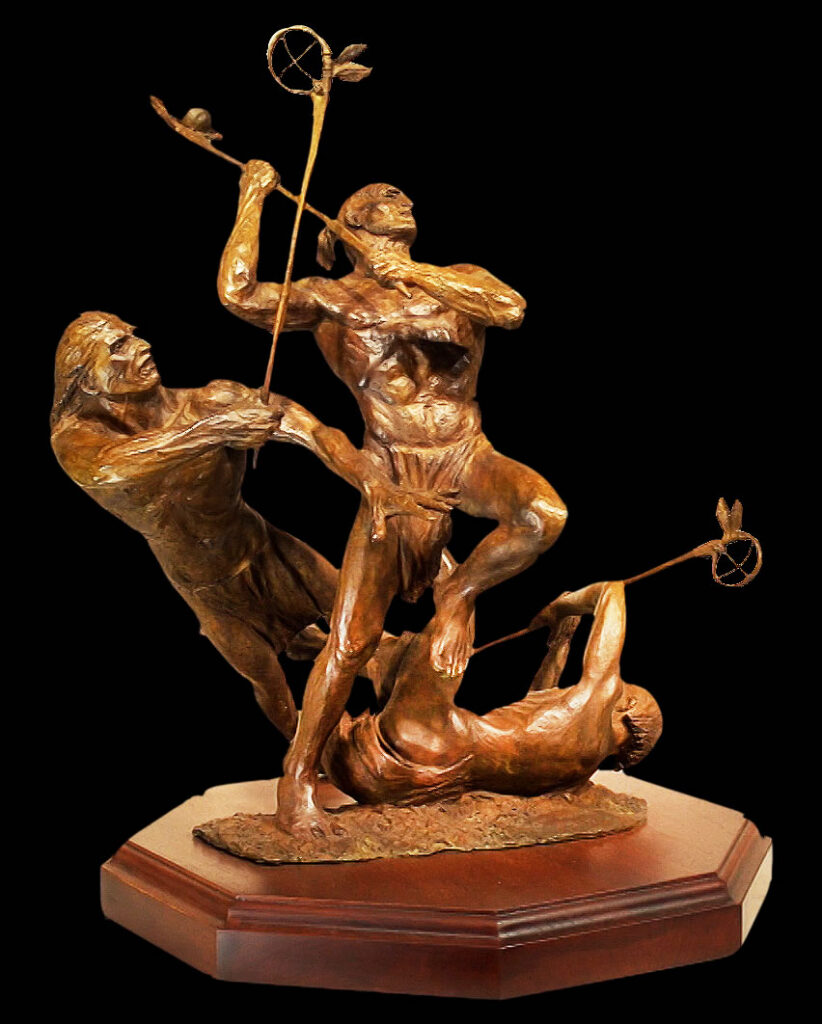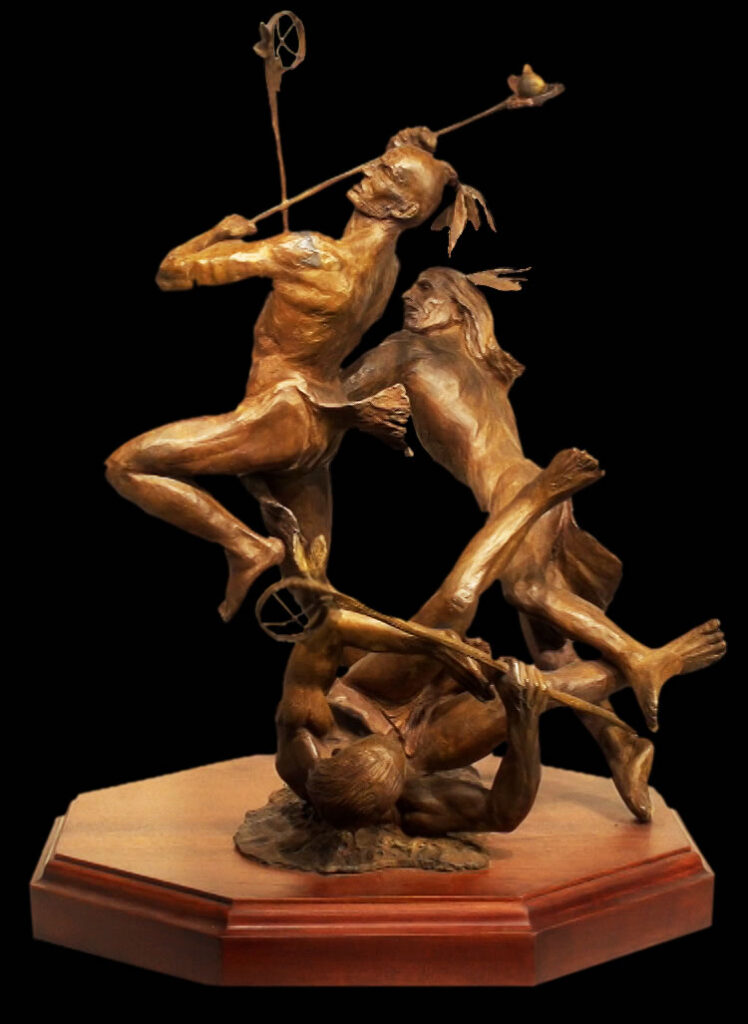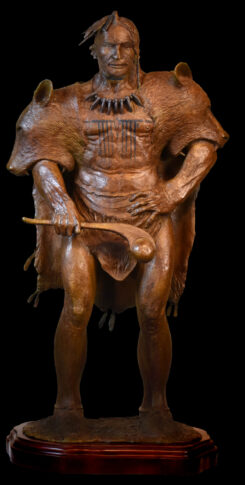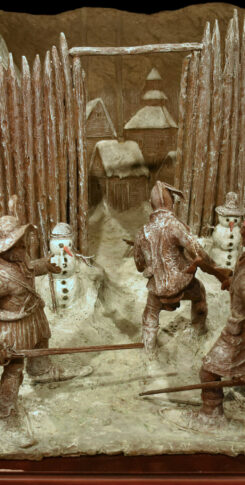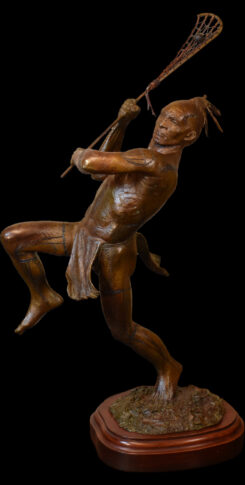The most famous lacrosse match in history
Bronze edition: 25 | Height: 15″
Among the tribes of the Eastern Woodlands, lacrosse was valued in part as a substitute for warfare – as a safety valve to release aggressive and competitive tendencies, especially among young men during times of peace. As Joseph Brant (Thayendenegea), the famous Mohawk chief, observed prior to a 1797 Seneca-Mohawk lacrosse game in which each team fielded 600 players, (playing in shifts of 60 men to a side at one time): “Now that the tomahawk has been put aside, we are aware that there are many fine warriors on your team whose energies tested in battle might now be brought to the playing field…today we fight for silver armbands and blankets to take home, not for scalps and the plunder of war.”
Lacrosse was likewise of value as a way of preparing young men for the rigors of warfare and for offering individuals a “stage” to demonstrate prowess that would gain for them notoriety and win for them honor and esteem among the people.
Perhaps the most famous lacrosse match recorded in history, involved tribes of the Great Lakes region in a carefully orchestrated plan by Minavivana to capture Fort Michilimackinac (Michigan) in 1763. Though ostensibly playing for those same “silver armbands & blankets,” in reality the stakes were much higher: “for scalps & the plunder of war. ” Since the recent overthrow of the Indians allies, the French, the injustice and arrogance on the part of the victorious British had caused many Indian nations throughout the old Northwest, to turn to Pontiac’s council – a victorious campaign by the Indians to drive out the British would awaken the French King from “sleep” and encourage his return. As a consequence, simultaneous attacks were planned at about a dozen English forts and outposts, Detroit among them, to coincide with British king’s birthday. At Fort Michilimackinac a unique stratagem was devised: The Sauk tribe would challenge the Ojibwe (Chippewa), to a lacrosse match. This Great Lakes form of lacrosse differed from the better known Iroquois version primarily in its use of smaller differently shaped sticks.
Among the hundreds of Ottawa, Pottawatomie, Sauk, Fox, Winnebago and Ojibwe camped nearby, so contagious was the growing excitement and heavy wagering, as the opening face-off neared that, as planned, even the unsuspecting British garrison was drawn in. For many of them, this would be their first opportunity to witness the Indian game that most had only heard about. Played with 40 men on a side, the game was a wonderful display of superb athleticism and brutal physical contact. The score was deadlocked at 3 – 3 and the next goal would decide the match. At this crucial moment with a powerful and difficult toss, the ball would careen off one of the distant open gates of the fort and disappear inside the palisades, (a play which had been carefully planned and practiced in advance.) As the players rushed inside, presumably after the ball, this was the signal for the squaws among the spectators to take out hatchets, clubs and guns concealed beneath their blankets. Lacrosse sticks were quickly exchanged for the implements of war. So cleverly did the strategy work that the element of surprise was virtually complete. The helpless garrison fell to a man. Only one or two English traders concealed by friends, lived to recount this; the most famous lacrosse match in history.

